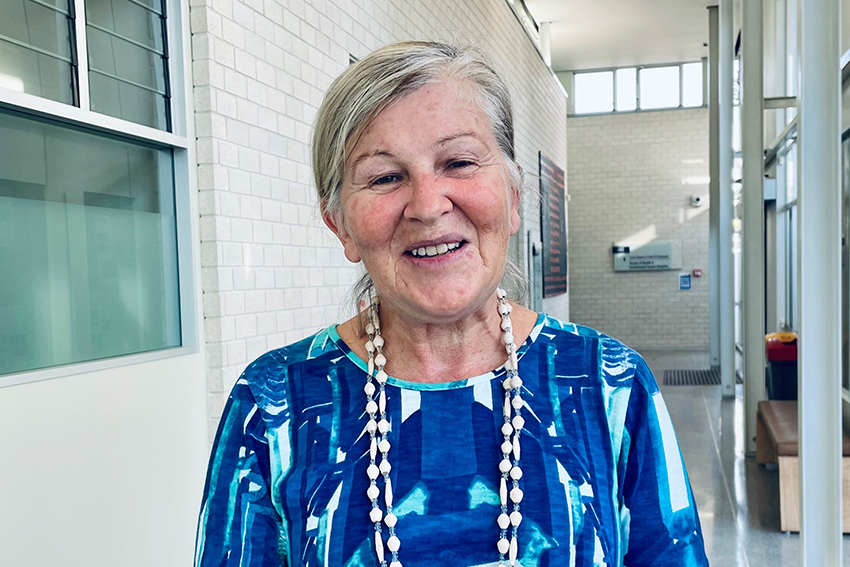The legacy of lockdown

A new study, which examines the impact of COVID-19 on community healthcare workers in Aotearoa, shows that the negative effects were long-lasting.
The lead author the study, Eleanor Holroyd Professor of Nursing at Auckland University of Technology (AUT), says community healthcare workers play a pivotal role in pandemic responses.
“Our research shows that many home carers and nurses took on additional responsibilities during lockdown, often becoming the main source of support for patients who were left isolated,” says Holroyd.
“For community-based carers, increased workloads coupled with the need to protect themselves and their families from the threat of contagion put strain on personal relationships. In some cases, stress and anxiety caused by the first lockdown persisted throughout the pandemic.”
The findings of the study, published in Health and Social Care in the Community, focus on the particular challenges faced by this often overlooked workforce during the first-wave of COVID-19 in New Zealand.
Researchers canvassed community-based nurses, midwives and personal care assistants who tended to patients in their homes rather than hospitals, providing everything from complex pharmaceutical interventions to supported daily living for the seven-week lockdown and beyond.
In 2020, the CARUL Collective conducted three national surveys, which received a total of 3644 responses, and in-depth interviews with 22 community healthcare workers. A follow-up survey was conducted in 2021.
The need to go the extra mile
The deep relationships that many carers had developed with patients before COVID-19 were heavily leaned-on during lockdown. Driven by personal bonds, they often took on additional tasks, delivering groceries and running errands, without extra pay or time-off allowances.
“Community healthcare workers described how many of their patients deteriorated during lockdown, due to changes in their routine or not being allowed to see their families, and overwhelmingly saw it as their duty to go the extra mile,” says Holroyd.
Popular media depicts carers, especially nurses, as a dedicated and self-sacrificing workforce that can be depended on against all odds. Participants expressed similar notions, taking satisfaction in having done what they thought was right, despite the increased workloads and absence of any formal recognition or remuneration.
The need to protect self and family
As well as going the extra mile for patients, community healthcare workers had to protect themselves and their families from COVID-19 transmission.
Navigating competing responsibilities contributed to the psychological pressure on this workforce during lockdown. The situation was made more stressful by lack of access to adequate protective equipment. Many participants felt that community-based carers were ‘at the bottom of the pile’ for provision of medical masks, gowns and gloves.
“Even after the seven-week lockdown ended, participants still felt heightened anxiety among patients and communities. Their experiences of tending to patients in isolation, as well as their own need for constant vigilance, meant that they themselves lived with fear of the unknown or threat of contagion,” says Holroyd.
One participant said, ‘It was very hard to calm down from there. I feel like a tap has been turned on and all the anxiety of my life is running nonstop. I still don’t think it has stopped’.
The strain on personal relationships
While the first lockdown was relatively short-lived, it had far-reaching repercussions for many people’s relationships.
“The study indicates that the first lockdown was particularly hard for in-home carers and nurses. Isolated working conditions were often compounded by self-isolation at home. Being confined to separate bubbles weakened once-close connections,” says Holroyd.
Many participants had no mental or emotional energy outside of work, and nobody in particular caring for them. They also carried the long-term impacts of stigma, either because loved ones remained anxious that they might transmit the virus or damage to personal relationships proved difficult to heal.
Recommendations for policy and practice
Holroyd says we need to demystify the heroism and self-sacrifice projected onto healthcare workers.
“The notion of sacrifice has been used to portray carers as model citizens. However, this puts extreme pressure on a workforce where the vast majority are women and where it is still widely expected that, as carers and women, they will go the extra mile at work and at home,” she says.
The study made five recommendations to safeguard community healthcare workers in future pandemics – acknowledging the crucial role this workforce; demystifying heroism and self-sacrifice; timely provision of adequate protective equipment; improved remuneration and time-off allowances, as well as compensation for additional duties and risks; regular counselling, peer support groups and education on work-life balance.
“Any support measures need to address the ongoing consequences of a pandemic, as psychological and social effects can be long-lasting. We must start by acknowledging these as legitimate concerns and making a commitment to reduce associated stress and anxiety,” says Holroyd.
“Above all, it is vital to recognise the specific contributions of community healthcare professionals in navigating the multiple challenges of a pandemic. These distinct contributions must be anticipated in further pandemic planning.”
About Professor Eleanor Holroyd
Eleanor Holroyd is a Professor of Nursing at the AUT School of Clinical Sciences. She is co-director of the AUT Centre for Migrant and Refugee Health Research and a member of the international CARUL Collective. With a clinical background in nursing and midwifery, her research focuses on the COVID-19 response, migrant and refugee health, women’s sexual health, and social equity.
About the CARUL Collective
This study was conducted by the international CARUL Collective (social science research on ‘Care and Responsibility Under Lockdown’) which investigates how social groups and institutions reacted to challenge that the COVID-19 pandemic posed and continues to pose.
“We are specifically interested in how people take care of themselves and each other, and take on diverse roles of responsibility during lockdowns,” says Holroyd.